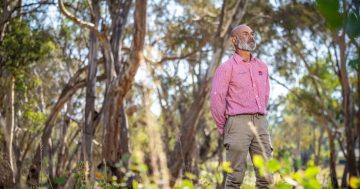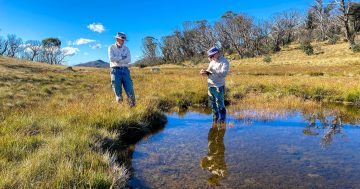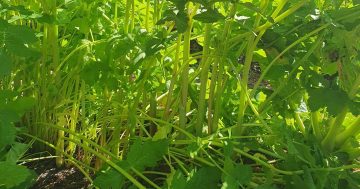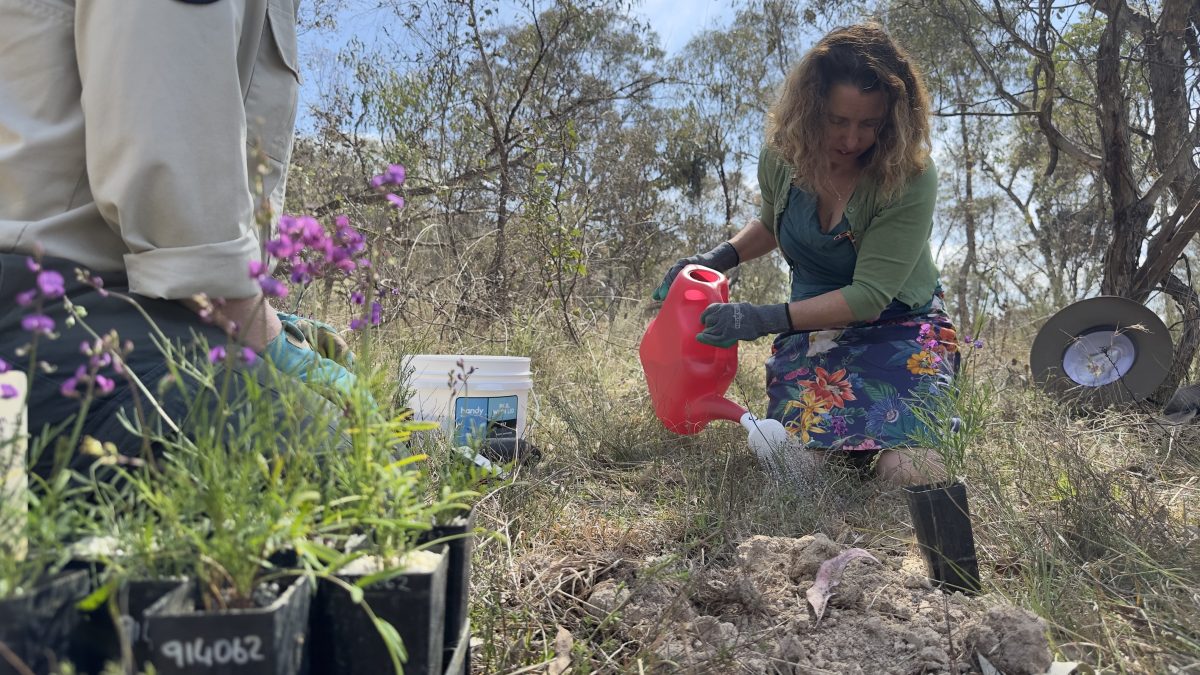
ACT Environment Minister Rebecca Vassarotti helped ACT Government vegetation ecologist Emma Cook establish some of the first Small Purple Pea plants. Photo: Travis Radford.
If all goes to the ACT Government’s plan, Canberrans will start to see more small purple blooms across the capital in the coming years – and not of the tulip variety.
About 1000 of the endangered Small Purple Pea plants will be transplanted from the Australian National Botanical Gardens (ANBG) across the ACT by the end of 2025.
Once relatively widespread in the grassy woodlands of Victoria, NSW and the ACT, the plant’s range has fragmented into two clusters in central eastern NSW and Canberra.
ACT Government vegetation ecologist Emma Cook says the plan to re-establish wild and self-sustaining populations of the plant was hatched over a coffee with ANBG staff in 2016.
“It started with seed collection from across all of our [Small Purple Pea] populations through the ACT and Burra area and that went into developing a seed orchard at the Botanical Gardens,” she explained.
“[It took] a number of years of developing that up in the nursery and learning about how to get them to a point of robustness and strength to put them out and hopefully get success.”
A decade ago in 2012-13, a similar non-government-managed translocation attempt was made in the ACT with more than 100 Small Purple Pea plants raised at the ANBG, but only around one-third of the plants survived.
Ms Cook said those plants were younger, whereas this batch is at least two years old and has more established root systems, giving them a better likelihood of survival.
She said high rainfall may have also played a part in the 2012-13 attempt, though the new plants may face the opposite issue.
“We’re hoping because they are older, they will be able to tolerate the hotter, drier weather we’re going to experience,” Ms Cook said.
“They do have quite a positive response to fire in both spring and autumn. They don’t require it, but they survive quite well with it and germinate quite well after fire.
“That’s our biggest worry, about how they’re going to survive through that, but we are prepared to keep providing TLC in the form of water and grazing protection into the future.”
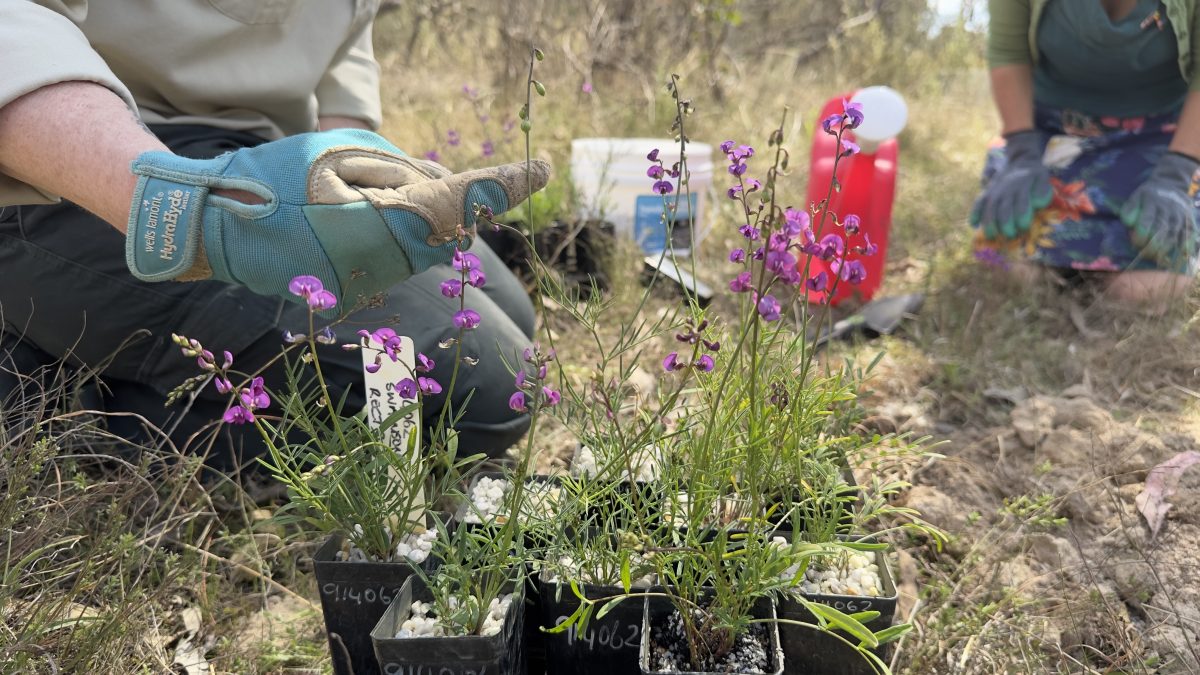
The Small Purple Pea is a native herb that was once relatively widespread in parts of Victoria, NSW and the ACT. Photo: Travis Radford.
ACT Environment Minister Rebecca Vassarotti said the government is doing everything it can to mitigate the risk of bushfires, including cultural and ecological burns.
“Grassfires will be a particular risk this year and so we are looking at how we do protect our grasslands,” she said.
“We need to ensure that the risk is managed and we are protecting the species, the ecosystem as a whole and of course, people that are living here.”
Ms Cook remains hopeful and pointed to a recent translocation of plants also raised by the ANBG around Mudgee and Wellington in NSW with success and survival rates in the region of 70 per cent.
“If we have one plant survive, it’ll be a good thing, but obviously that’s not enough,” Ms Cook said. “If we can obtain a 50 per cent or more translocation survival rate, then that’d be great.”
But she says the “ultimate gold star” is whether the new plants reproduce with wild plants in the area and their population becomes more genetically diverse and self-sustaining.












